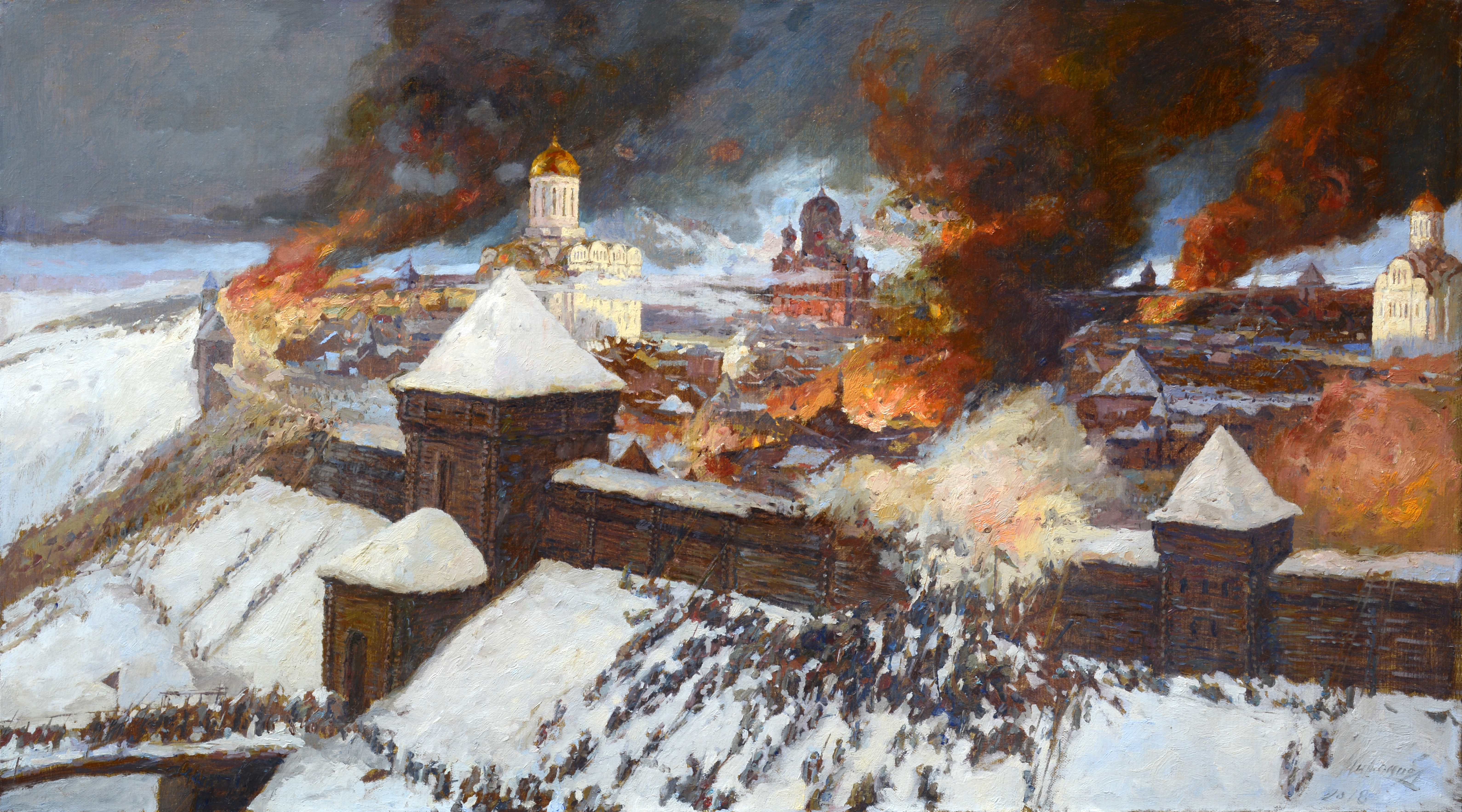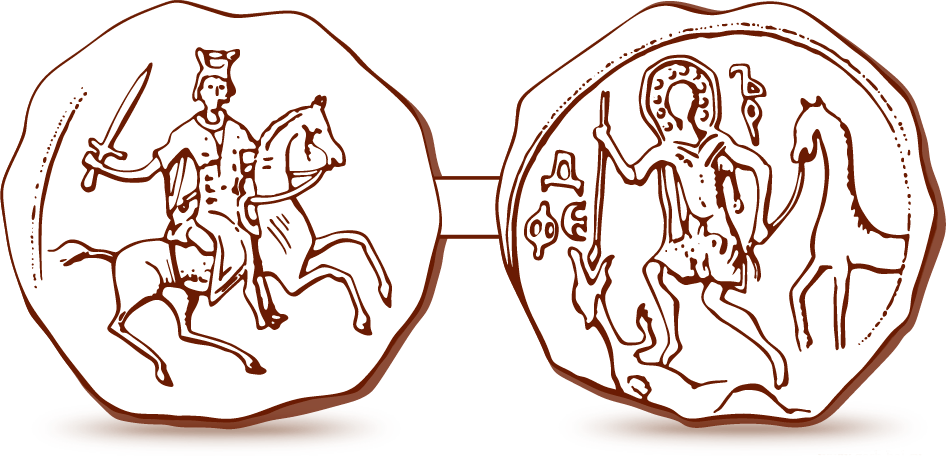|
Vladimir-Suzdal
The Principality of Suzdal, from 1157 the Grand Principality of Vladimir, commonly known as Vladimir-Suzdal, or simply Suzdalia, was a medieval principality that was established during the disintegration of Kievan Rus'. In historiography, the territory of the grand principality and the principalities that emerged from it is commonly denoted as northeast Russia or northeast Rus. Yuri Dolgorukiy, Yury Dolgoruky () moved his capital from Rostov, Yaroslavl Oblast, Rostov to Suzdal in 1125, following the death of his father. He ruled a principality that had become virtually independent. His son Andrey Bogolyubsky, Andrey () moved the capital to Vladimir, Russia, Vladimir and had Kiev sacked in 1169, leading to political power shifting to the north-east. Andrey's younger brother Vsevolod III () secured control of the throne, and following his death, a dynastic conflict ensued. Yuri II of Vladimir, Yury II () was killed during the Mongol invasion of Kievan Rus', Mongol invasions ... [...More Info...] [...Related Items...] OR: [Wikipedia] [Google] [Baidu] |
Mongol Invasion Of Kievan Rus'
The Mongol Empire invaded and conquered much of Kievan Rus' in the mid-13th century, sacking numerous cities such as Principality of Ryazan, Ryazan, Principality of Yaroslavl, Yaroslavl, Principality of Pereyaslavl, Pereyaslavl and Vladimir-Suzdal, Vladimir, including the largest: Grand Principality of Kiev, Kiev (50,000 inhabitants) and Principality of Chernigov, Chernigov (30,000 inhabitants). The Siege of Kiev (1240), siege of Kiev in 1240 by the Mongols is generally held to mark the end of the state of Kievan Rus', which had already been undergoing Feudal fragmentation, fragmentation. Many other principalities and urban centres in the northwest and southwest escaped complete destruction or suffered little to no damage from the Mongol invasion, including Kingdom of Galicia–Volhynia, Galicia–Volhynia, Pskov Land, Pskov, Principality of Smolensk, Smolensk, Principality of Polotsk, Polotsk, Principality of Vitebsk, Vitebsk, and probably Vladimir-Suzdal, Rostov and Uglic ... [...More Info...] [...Related Items...] OR: [Wikipedia] [Google] [Baidu] |
Yuri Dolgoruky
Yuri I Vladimirovich (; ; c. 1099 – 15 May 1157), commonly known as Yuri Dolgorukiy (, ) or the Long Arm, was a Monomakhovichi prince of Rostov and Suzdal, acquiring the name ''Suzdalia'' during his reign. Noted for successfully curbing the privileges of the landowning '' boyar'' class in Rostov-Suzdal and his ambitious building programme, Yuri transformed this principality into the independent power that would evolve into early modern Muscovy. Yuri Dolgorukiy was the progenitor of the Yurievichi ( ), a branch of the Monomakhovichi. Yuri spent much of his life in internecine strife with the other Rus' princes for suzerainty over the Kievan Rus, which had been held by his father ( Vladimir Monomakh) and his elder brother before him. Although he twice managed to briefly hold Kiev (in September 1149 – April 1151, again in March 1155 – May 1157) and rule as Grand Prince of Kiev, his autocratic rule and perceived foreigner status made him unpopular with the powerful K ... [...More Info...] [...Related Items...] OR: [Wikipedia] [Google] [Baidu] |
Vladimir, Russia
Vladimir (, ) is a types of inhabited localities in Russia, city and the administrative center of Vladimir Oblast, Russia, located on the Klyazma River, east of Moscow. It is served by a railway and the M7 motorway (Russia), M7 motorway. Population: History Vladimir was Vladimir-Suzdal, one of the medieval capitals of Russia, with significant buildings surviving from the 12th century. Two of its Russian Orthodox cathedrals, a monastery, and associated buildings have been designated among the White Monuments of Vladimir and Suzdal, a UNESCO World Heritage Site. In the past, the city was also known as Vladimir-on-Klyazma () and Vladimir-Zalessky (), to distinguish it from Volodymyr, Volyn Oblast, another Vladimir/Volodymyr in Volhynia (modern-day Ukraine). Foundation The founding date of Vladimir is disputed between 990 and 1108. In the ''Novgorod First Chronicle'', Vladimir is mentioned under the year 1108, and during the Soviet period, this year was decreed to be its foundatio ... [...More Info...] [...Related Items...] OR: [Wikipedia] [Google] [Baidu] |
Yuri II Of Vladimir
Yuri II (, also transcribed as ''Iuri''), also known as George II of Vladimir or as Georgy II Vsevolodovich (26 November 11884 March 1238), was the fourth Grand Prince of Vladimir (1212–1216, 1218–1238) who presided over the Principality of Vladimir-Suzdal at the time of the Mongol invasion of Kievan Rus'. He was the seventh child and the third and best-loved son of Vsevolod III (Vsevolod the Big Nest) and of Maria Shvarnovna. He first distinguished himself in the battles against Ryazan in 1208. His father wanted Yuri to inherit Rostov and his elder brother Konstantin to succeed him in Vladimir. The latter, however, declared that he would rule both towns or nothing at all. Thereupon Vsevolod disinherited Konstantin and passed the throne to Yuri, who received the largest portion of his possessions. Before his death, grand prince Vsevolod divided his territories between his sons; as soon as he died in 1212, the Vladimir-Suzdal war of succession (1212– ... [...More Info...] [...Related Items...] OR: [Wikipedia] [Google] [Baidu] |
Yuri Dolgorukiy
Yuri I Vladimirovich (; ; c. 1099 – 15 May 1157), commonly known as Yuri Dolgorukiy (, ) or the Long Arm, was a Monomakhovichi prince of Rostov and Suzdal, acquiring the name ''Suzdalia'' during his reign. Noted for successfully curbing the privileges of the landowning '' boyar'' class in Rostov-Suzdal and his ambitious building programme, Yuri transformed this principality into the independent power that would evolve into early modern Muscovy. Yuri Dolgorukiy was the progenitor of the Yurievichi ( ), a branch of the Monomakhovichi. Yuri spent much of his life in internecine strife with the other Rus' princes for suzerainty over the Kievan Rus, which had been held by his father ( Vladimir Monomakh) and his elder brother before him. Although he twice managed to briefly hold Kiev (in September 1149 – April 1151, again in March 1155 – May 1157) and rule as Grand Prince of Kiev, his autocratic rule and perceived foreigner status made him unpopular with the powerful K ... [...More Info...] [...Related Items...] OR: [Wikipedia] [Google] [Baidu] |
Grand Prince Of Vladimir
The Prince of Vladimir, from 1186 Grand Prince of Vladimir (), also translated as Grand Duke of Vladimir, was the title of the monarch of Vladimir-Suzdal. The title was passed to the prince of Moscow in 1389. Overview The monarch of Vladimir-Suzdal's title, ''veliky knyaz'' or ''velikii kniaz'' (, ) is variously translated into English as "Grand duke#Russian grand dukes, grand duke" or "Grand prince#Kievan Rus' and successor states, grand prince". Consequently, Vladimir-Suzdal has been interchangeably described as a "grand principality" or "grand duchy". Linguist Alan Timberlake (2000) found that the first time the phrase ''velikȳi knęz'' shows up in the ''Suzdalian Chronicle'' (in the ''Laurentian Codex, Laurentian'', ''Radziwiłł Chronicle, Radziwiłł'' and ''LPS'' manuscripts) is under the year 1186, where it is applied to Vsevolod the Big Nest, Vsevolod Yurievich. In his early reign from 1177 to 1186, he is simply referred to as "prince Vsevolod" (''knęz (zhe) Vsevolod'' ... [...More Info...] [...Related Items...] OR: [Wikipedia] [Google] [Baidu] |
Andrey Bogolyubsky
Andrey Yuryevich Bogolyubsky (, lit. Andrey Yuryevich of Bogolyubovo; died 28 June 1174) was Prince of Vladimir-Suzdal from 1157 until his death. During repeated internecine wars between the princely clans, Andrey accompanied his father Yuri Dolgorukiy during a brief capture of Kiev in 1149. 20 years later, his son led the Sack of Kiev (1169). He was canonized as a saint in the Russian Orthodox Church in 1702. Biography According to the ''Primary Chronicle'' (PVL), Andrey's parents married on 12 January 1108, as part of a peace agreement between the Rus' and the Cumans (Polovtsi). Andrey's father was Yuri Vladimirovich (), Prince of Rostov and Suzdal commonly known as Yuri Dolgoruki (), a son of Volodimer II Monomakh, progenitor of the Monomakhovichi. Andrey's mother was an unnamed Cuman princess, a daughter of Aepa son of Osen'. From this marriage, Andrey Bogolyubsky was born in 1111. Yuri proclaimed Andrey a prince in Vyshgorod (near Kiev). Seizing power (1155– ... [...More Info...] [...Related Items...] OR: [Wikipedia] [Google] [Baidu] |
Vsevolod III
Vsevolod III Yuryevich, or Vsevolod the Big Nest (; 1154–1212), was Grand Prince of Vladimir-Suzdal, Vladimir from 1176 to 1212. During his long reign, the city reached the zenith of its glory. Family Vsevolod was the tenth or eleventh son of Yuri Dolgoruky (c. 1099 – 1157), who founded the town Dmitrov to commemorate the site of Vsevolod's birth. Nikolai Karamzin (1766 – 1826) initiated the speculation identifying Vsevolod's mother Helene as a Greece, Greek princess, because after her husband's death she took Vsevolod with her to Constantinople. Vsevolod spent his youth at the chivalric court of the Komnenoi. On his return from the Byzantine Empire to Rus' in 1170, Vsevolod supposedly visited Tbilisi, as a local chronicle records that that year the Georgia (country), Georgian king entertained his nephew from Constantinople and married him to his relative, an Ossetian princess. Reign In 1173 two Smolensk princes captured Kiev (Kyiv), captured Vsevolod and briefly inst ... [...More Info...] [...Related Items...] OR: [Wikipedia] [Google] [Baidu] |
Kievan Rus'
Kievan Rus', also known as Kyivan Rus,. * was the first East Slavs, East Slavic state and later an amalgam of principalities in Eastern Europe from the late 9th to the mid-13th century.John Channon & Robert Hudson, ''Penguin Historical Atlas of Russia'' (Penguin, 1995), p.14–16. Encompassing a variety of polities and peoples, including East Slavs, East Slavic, Norsemen, Norse, and Finnic peoples, Finnic, it was ruled by the Rurik dynasty, founded by the Varangians, Varangian prince Rurik.Kievan Rus , Encyclopædia Britannica Online. The name was coined by Russian historians in the 19th century to describe the period when Kiev was preeminent. At its greatest extent in the mid-11th century, Kievan Rus' stretched from the White Sea in the north to the Black Sea in the south and from the River source, headwaters of the ... [...More Info...] [...Related Items...] OR: [Wikipedia] [Google] [Baidu] |
Principality Of Tver
The Principality of Tver () was a Russian principality which existed between the 13th and the 15th centuries with its capital in Tver. The principality was located approximately in the area currently occupied by Tver Oblast and the eastern part of Smolensk Oblast. It was one of the states established after the fall of Kievan Rus'. Originally part of the Pereyaslavl-Zalessky principality, Tver became an independent principality when Yaroslav of Tver, Yaroslav Yaroslavich was given the western slice of his father's patrimony. During the 14th century, Tver rivaled the Principality of Moscow with the aim to become the center of the unified Russian state. Eventually it lost, decayed, and in 1485, it was annexed by Moscow. History Origins In the 1230s or the 1240s, Yaroslav II of Vladimir, Yaroslav Vsevolodovich, the grand prince of Vladimir, detached the city of Tver from the Pereyaslavl-Zalessky principality (where it previously belonged), and gave it to his son Alexander Nevsky, A ... [...More Info...] [...Related Items...] OR: [Wikipedia] [Google] [Baidu] |
Alexander Nevsky
Alexander Yaroslavich Nevsky (; ; monastic name: ''Aleksiy''; 13 May 1221 – 14 November 1263) was Prince of Novgorod (1236–1240; 1241–1256; 1258–1259), Grand Prince of Kiev (1249–1263), and Grand Prince of Vladimir (1252–1263). Commonly regarded as a key figure in medieval Russian history, Alexander was a grandson of Vsevolod the Big Nest and rose to legendary status on account of his military victories in northwestern Russia over Swedish invaders in the 1240 Battle of the Neva, as well as German crusaders in the 1242 Battle on the Ice. He preserved Eastern Orthodoxy, agreeing to pay tribute to the powerful Golden Horde. Metropolitan Macarius of Moscow canonized Alexander Nevsky as a saint of the Russian Orthodox Church in 1547. Early life Born in Pereslavl-Zalessky around the year 1220, Alexander was the second son of Prince Yaroslav Vsevolodovich. His mother was , daughter of Mstislav Mstislavich The Bold. From the ''Tales of the Life and Courage of the ... [...More Info...] [...Related Items...] OR: [Wikipedia] [Google] [Baidu] |





